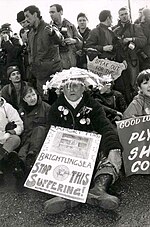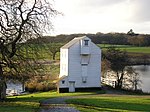The Battle of Brightlingsea refers to a series of protests by animal rights supporters held in Brightlingsea, England, between 16 January and 30 October 1995, to prevent the export of livestock through the town. During this time period, early 1990s, this action had been talked and argued about among individuals. The name was first used by the media in The Independent newspaper, after Essex Police used riot control measures against demonstrators.By 1995, members of the public had become increasingly concerned about the conditions in which animals were reared, transported and slaughtered. Some examples of the farm animals that were being exported to continental Europe were cattle, veal calves and sheep. British exporters had been forced to use small ports such as Brightlingsea to transport livestock after the country's three main ferry operators introduced bans on live cargo. This followed mounting public pressure about the suffering of sheep and cattle packed into huge transport vehicles for excessive periods. There were 2 national campaign groups trying to help this cause; the Royal Society for the Prevention of Cruelty to Animals and Compassion in World Farming. They had called for a ban on all live exports by limiting journeys to eight hours. At the time, European regulations allowed for journeys of up to 24 hours without food or water. They used different tactics to highlight this issue, and eventually succeeded in influencing public opinion so that ferry companies took action. As a result of the ferry company ban, however, the transportation of the cattle was moved to the small, independently operated port of Brightlingsea.The demonstrations, which were composed largely of local residents, ended on 30 October, when exporters announced they would no longer transport animals through the town because of the extra cost and logistical chaos caused by the daily protests. In practice, the export of live animals continued from other small ports, halting only in February 1996 when the European Union banned all meat exports from Britain over fears of "mad cow disease" entering the European food chain. The ban was lifted in 2006.







